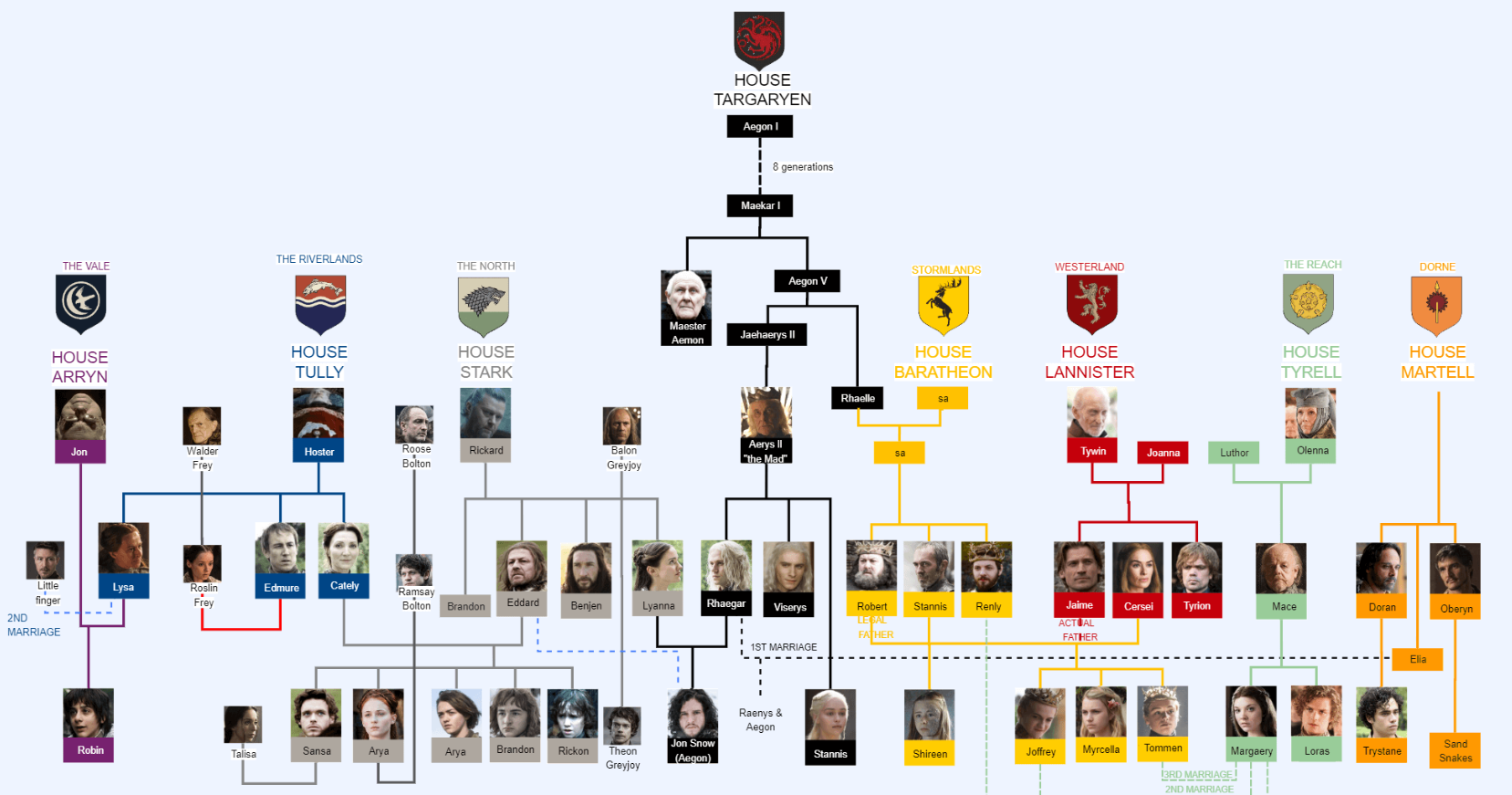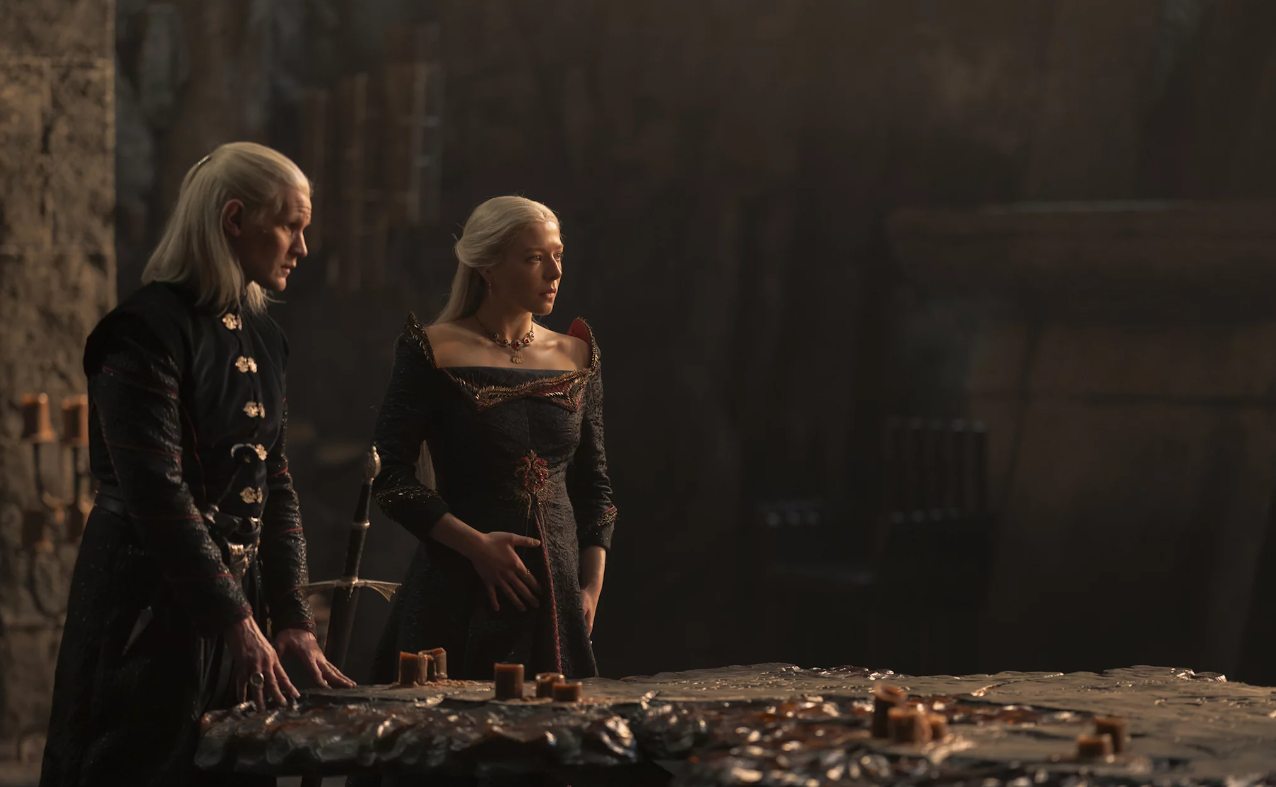The Game of Thrones family tree is a complex web of relationships that spans generations and kingdoms. Understanding the connections between the various houses and characters is crucial for fully grasping the intricate plotlines and power struggles that drive the narrative of the series. At the center of the family tree is House Stark, the noble family of the North, whose members are known for their honor and loyalty. The Starks are closely related to House Targaryen, the former rulers of the Seven Kingdoms, whose members are known for their dragon riding abilities and fiery temperaments. Other important houses in the family tree include House Lannister, known for their wealth and cunning, and House Baratheon, known for their strength and determination.
One of the key relationships in the Game of Thrones family tree is the connection between House Stark and House Targaryen. This relationship is central to the overarching plot of the series, as it involves the union of two powerful houses and the potential for their offspring to wield immense power. The most famous example of this union is the marriage between Rhaegar Targaryen and Lyanna Stark, which resulted in the birth of Jon Snow, a character whose true parentage becomes a major plot point in the later seasons of the show. Jon Snow’s lineage as a Targaryen Stark is a defining factor in his character arc and his ultimate destiny in the battle for the Iron Throne.
Another important aspect of the Game of Thrones family tree is the interplay between the various houses and their alliances. Throughout the series, characters form alliances and betrayals based on their family ties and loyalties, leading to shifting power dynamics and conflicts between the different factions. For example, the Lannisters and the Starks are bitter enemies due to the events of the War of the Five Kings, which was sparked by the death of Ned Stark and the subsequent power struggle between the two houses. The alliances and rivalries between the houses add depth and complexity to the story, as characters navigate the treacherous political landscape of Westeros.
In addition to the major houses, there are also minor houses and noble families that play a role in the Game of Thrones family tree. These lesser-known houses often have their own agendas and motivations, which can influence the larger events of the series. For example, House Martell of Dorne has a longstanding feud with the Lannisters, which comes to a head in the later seasons of the show. The interactions between the major and minor houses create a rich tapestry of relationships and conflicts that drive the narrative forward and keep viewers engaged.
Overall, the Game of Thrones family tree is a complex and intricate web of relationships that adds depth and richness to the series. Understanding the connections between the various houses and characters is crucial for fully appreciating the political intrigue and power struggles that drive the plot. By delving into the history and lineage of the different families, viewers can gain a deeper understanding of the world of Westeros and the motivations of its inhabitants. Whether you’re a casual viewer or a die-hard fan, exploring the Game of Thrones family tree is sure to enhance your appreciation of this epic fantasy saga.

Overview of the Game of Thrones Family Tree
The Game of Thrones family tree is a complex web of relationships that spans multiple generations and houses. At the center of this intricate network are the major houses of Westeros, such as the Starks, Lannisters, and Targaryens. Each house has its own unique history and lineage, with various branches and offshoots that intertwine with one another. The family tree is essential for understanding the power dynamics and political intrigue that drive the plot of the series.
It provides insight into the alliances and rivalries that shape the Seven Kingdoms and influence the course of events. From the Stark siblings to the Lannister twins to the Targaryen dragon riders, each character’s place in the family tree informs their motivations and actions throughout the series. As new characters are introduced and old secrets are revealed, the family tree continues to grow and evolve, revealing hidden connections and unexpected twists that keep viewers guessing. Ultimately, the Game of Thrones family tree serves as a roadmap for navigating the complex world of Westeros and understanding the intricate relationships that drive the story forward.
Key Houses and Their Connections. Game of Thrones Family Tree
In the intricate web of relationships that make up the Game of Thrones family tree, key houses play a crucial role in shaping the fate of the Seven Kingdoms. From the powerful Lannisters to the noble Starks, each house has its own unique history and connections that have far-reaching consequences. The Stark family, with their strong sense of honor and duty, are deeply intertwined with the Baratheons through the marriage of Ned Stark’s daughter Sansa to King Joffrey Baratheon.
The Lannisters, known for their cunning and ambition, are linked to the Tyrells through the marriage of Cersei Lannister to King Robert Baratheon. These alliances and rivalries between houses form the backbone of the Game of Thrones storyline, as characters navigate the complex political landscape of Westeros in their quest for power and survival. As the series progresses, new alliances are formed and old ones are broken, leading to unexpected twists and turns that keep viewers on the edge of their seats. Ultimately, the connections between key houses in the Game of Thrones family tree are a reminder of the intricate and ever-changing nature of power dynamics in a world where loyalty and betrayal go hand in hand.

Important Characters and Their Relationships. Game of Thrones Family Tree
In the intricate web of relationships within the Game of Thrones family tree, there are several important characters whose connections shape the course of the narrative. At the center of it all is the Stark family, whose members are bound by blood and loyalty. Jon Snow, despite being a bastard, shares a close bond with his half-siblings Arya and Sansa, as well as his father figure, Eddard Stark. The Lannisters, on the other hand, are a family torn apart by betrayal and power struggles. Cersei and Jaime’s forbidden love affair results in a complex dynamic that affects their relationships with their children, Joffrey, Myrcella, and Tommen.
The Targaryens, with their claim to the Iron Throne, have a history of incestuous relationships that have led to madness and conflict. Daenerys, as the last surviving member of her family, navigates her relationships with advisors like Jorah Mormont and Grey Worm as she seeks to reclaim her birthright. Meanwhile, the Baratheons are a fractured family with Robert, Stannis, and Renly each vying for the throne. Their relationships are strained by ambition and jealousy, ultimately leading to their downfall. As the Game of Thrones family tree grows more tangled with each passing season, the fate of Westeros hangs in the balance as alliances are forged and broken, and betrayals abound.
How the Family Tree Impacts the Storyline. Game of Thrones Family Tree
The family tree in Game of Thrones plays a crucial role in shaping the storyline and driving the narrative forward. With a web of intricate relationships and alliances, the characters in the series are often defined by their familial ties and connections. The noble houses of Westeros are constantly vying for power and control, with each family member playing a specific role in the overarching political landscape.
For example, the Lannisters are known for their cunning and ruthlessness, while the Starks are revered for their honor and loyalty. These familial traits not only impact individual characters but also influence their interactions with others and the decisions they make throughout the series. Additionally, the family tree serves as a reminder of the complex history and lineage of each house, shedding light on past events and conflicts that continue to shape the present-day narrative.
As characters navigate their way through the treacherous world of Westeros, their family ties often dictate their loyalties and motivations, adding layers of depth and complexity to the storyline. Ultimately, the family tree in Game of Thrones is more than just a genealogical chart – it is a reflection of the intricate dynamics and power struggles that drive the plot forward, making it an essential element of the series’ storytelling.

Navigating the Complexities of the Tree. Game of Thrones Family Tree
The Game of Thrones family tree is a complex web of relationships and alliances that can be difficult to navigate. With so many characters and houses, it can be challenging to keep track of who is related to who and how they are connected. The family tree spans across multiple generations and includes marriages, betrayals, and power struggles that further complicate the relationships between characters.
Understanding the intricacies of the family tree is crucial for following the storylines and character motivations in the series. Each house has its own sigil, motto, and history that adds to the complexity of the overall narrative. Characters often form alliances and rivalries based on their familial ties, leading to intricate plot twists and power struggles. Navigating the complexities of the Game of Thrones family tree requires a keen eye for detail and a deep understanding of the show’s lore. Fans of the series often spend hours dissecting the family tree and theorizing about the implications of various relationships and alliances.
The family tree serves as a roadmap for understanding the intricate political dynamics of Westeros and the characters’ motivations throughout the series. As the story unfolds, new branches are added to the family tree, revealing hidden connections and long-buried secrets that shape the fate of the characters and the realm. In the end, understanding and navigating the complexities of the Game of Thrones family tree is essential for unraveling the mysteries of the series and appreciating the rich tapestry of characters and relationships that drive the narrative forward.
